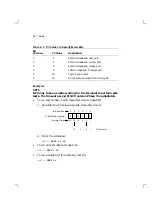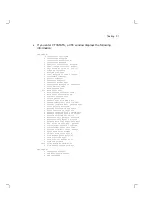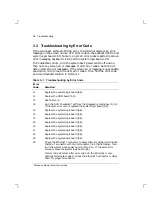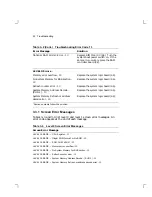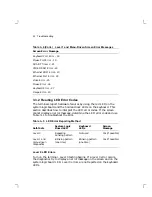
Testing
33
Active Internet connections
PCB
Proto Recv-Q Send-Q
Local Address
Foreign Address
(state)
609860
0
591
xds8.dsg.dec.com.771 aguru.dsg.dec.com.1058 ESTABLISHED
60A460
0
0
0.0.0.0.771
0.0.0.0.0
LISTEN
60B060
0
0
0.0.0.0.6000
0.0.0.0.0
LISTEN
SLEEPs:
&selwait == 0x97EA0
PCB
name
event
awakened
prio BFs
575610 Inetd
97EA0
0
26
MBUF statistics:
18/128 mbufs in use:
6 mbufs allocated to data
1 mbufs allocated to packet headers
3 mbufs allocated to socket structures
6 mbufs allocated to protocol control blocks
1 mbufs allocated to routing table entries
1 mbufs allocated to interface addresses
0/16 mapped pages in use
0 interface pages allocated
32 Kbytes allocated to network (8% in use)
0 requests for memory denied
0 requests for memory delayed
0 calls to protocol drain routines
--END--
2.4.2 Using ping
You can use the UNIX ping command to verify the network hardware,
Internet protocol (IP), and ICMP layers. Tracking a single-point hardware
or software failure on the Internet network can be difficult.
The ping command sends ICMP ECHO_REQUEST packets to network
hosts. The ping command utilizes the ICMP protocol’s mandatory ECHO_
REQUEST datagram to elicit an ICMP ECHO_RESPONSE from a host
or gateway. ECHO_REQUEST datagrams have an IP and ICMP header,
followed by a destruct time value and an arbitrary number of pad bytes
to fill out the packet. The default length of a datagram length is 64 bytes,
but you can change the length with the ping command.
Entering
ping
host name
without any options will either report
host
is alive
or
no answer from host
. Options to the ping command report
additional statistics. See your UNIX system documentation for details.






